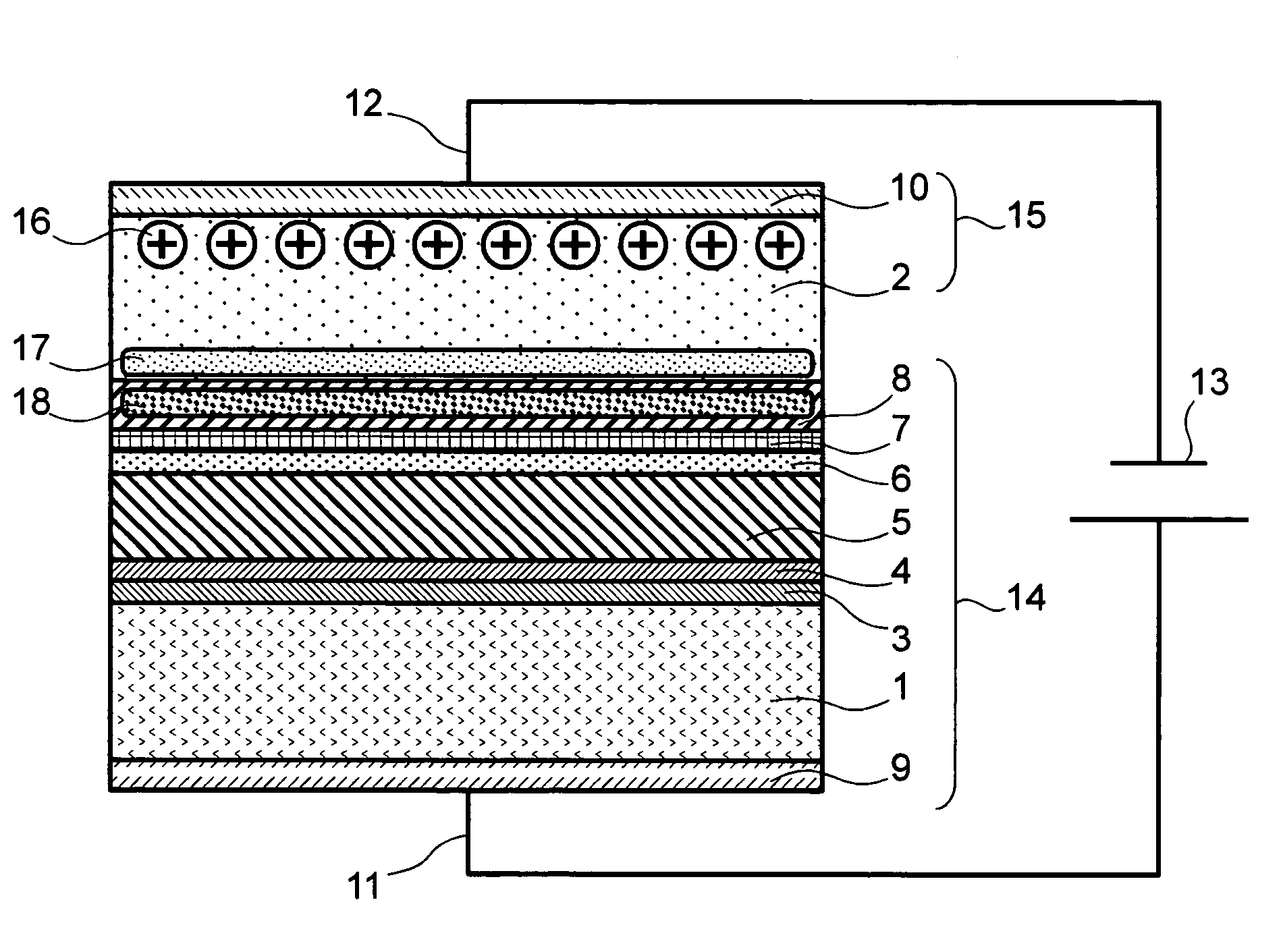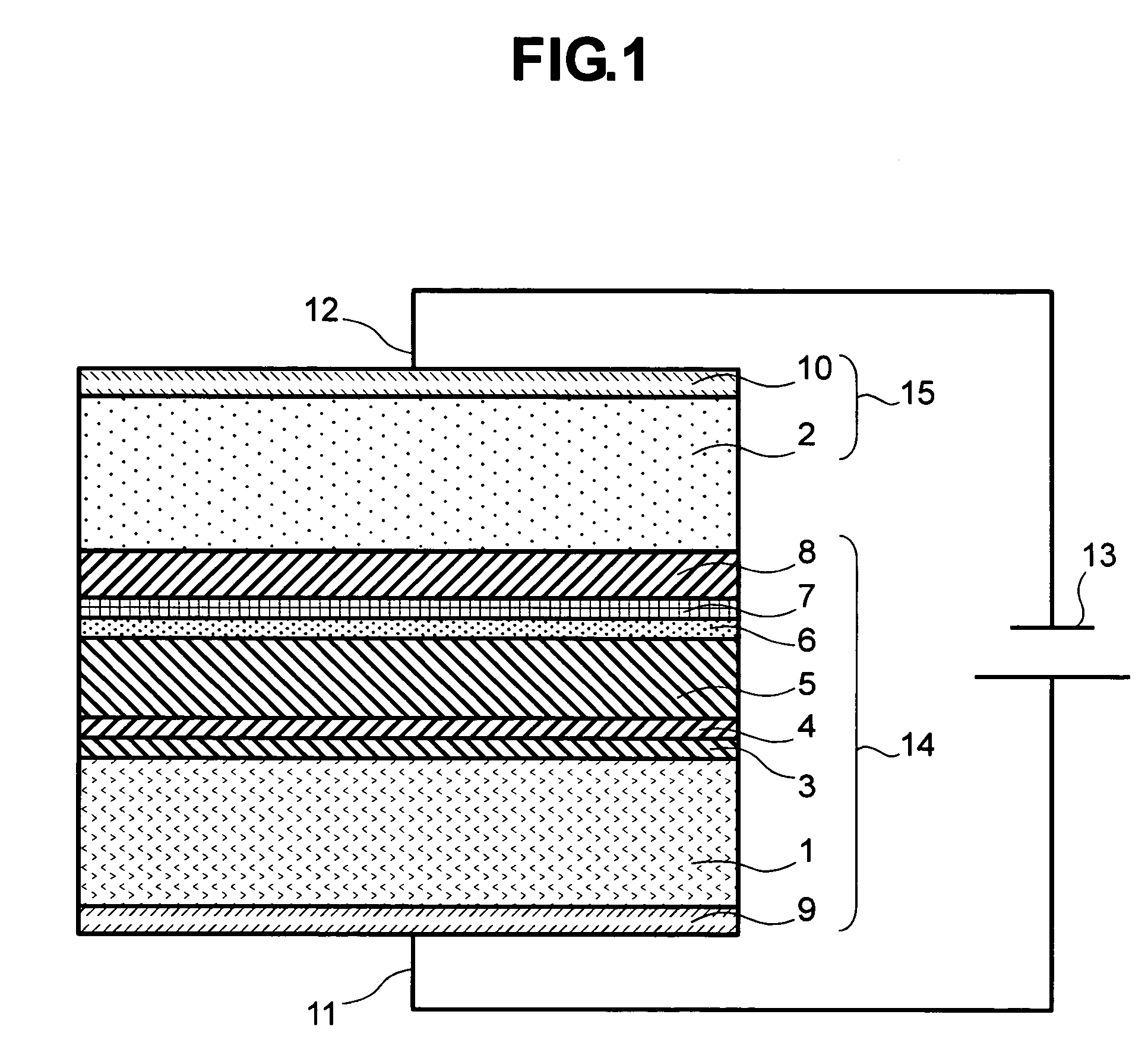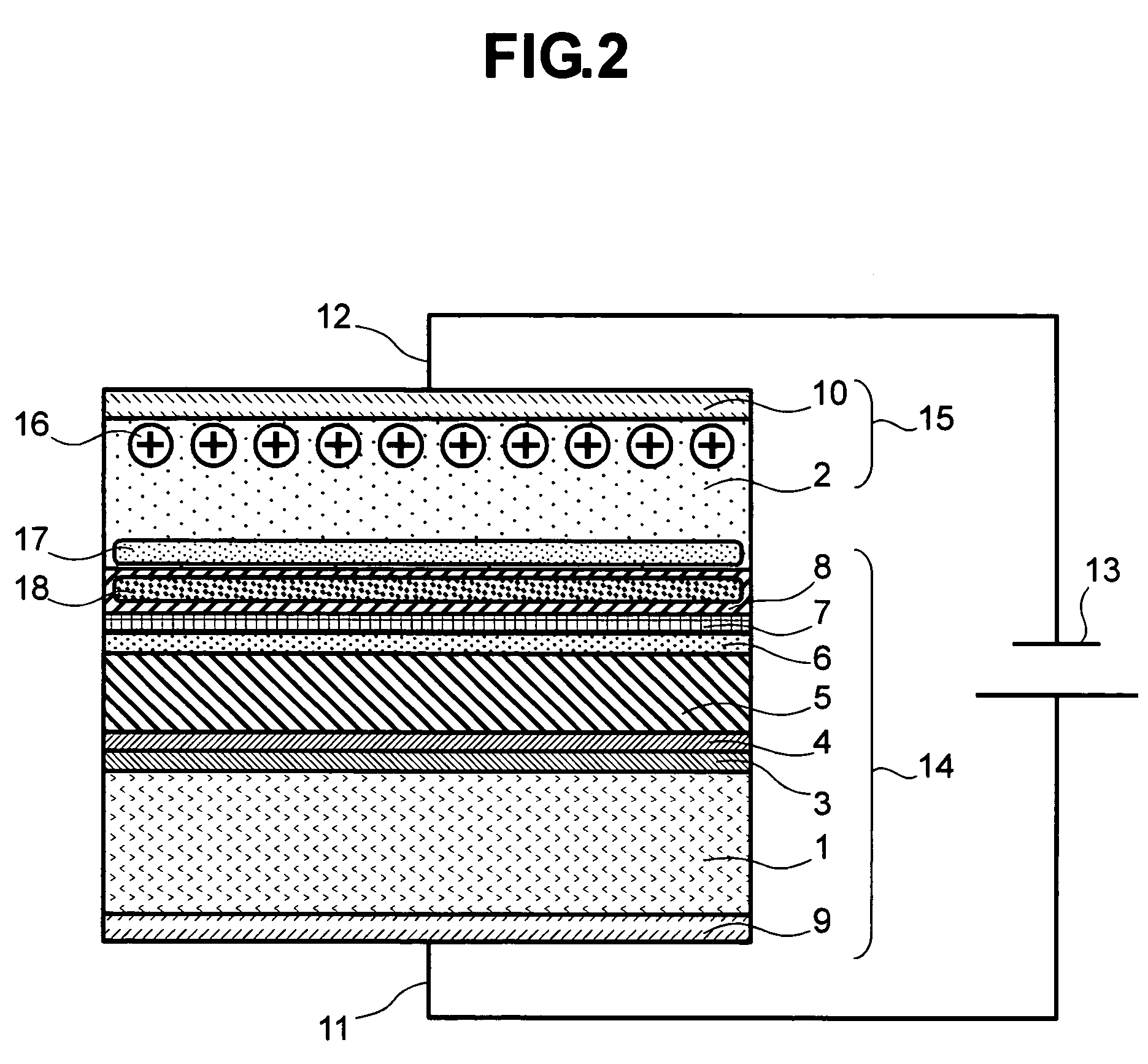Anodic bonding method and electronic device having anodic bonding structure
- Summary
- Abstract
- Description
- Claims
- Application Information
AI Technical Summary
Benefits of technology
Problems solved by technology
Method used
Image
Examples
first embodiment
[0028]the invention will be described with reference to FIG. 1. On a Si layer 1, a Ti film 3, a Pt film 4 and an Au film 5 are formed by vacuum vapor deposition or sputtering. The Ti film 3 has a function of improving the adhesion with the Si layer 1. The Pt film 4 has a function of improving the adhesion between the Au film 5 and the Ti film 3. The Au film 5 has a function, as a soft metal layer, of improving the adhesion with glass through deformation at the time of anodic bonding. The description of this embodiment makes reference by way of example to the use of Au as a representative of the type of soft metal that may be employed, but the soft metal layer is not restricted to the use of Au. Although, depending on the bonding temperature, Au, Ag, Cu, Pb or Sn is extremely soft even at a temperature of about 200° C. and shows sufficient deformation. Accordingly, in a case of using such a soft metal, it can be deformed sufficiently even if dust or wafer undulations are present more...
fourth embodiment
[0038]the invention will be described with reference to FIG. 6. A stack of an Au film 5 and an Sn film 20 is used as the soft metal layer. When the stack is heated at a bonding temperature of, e.g., 300° C., the Sn film 20 is melted, and, immediately thereafter, the Al film 8, the Ti film 7 and the Pt film 6 are deformed in such a manner as to conform the surfaces of inclusions and the glass 2. Subsequently, diffusion of cations in the glass is promoted by the application of voltage for anodic bonding. During heating, the Sn film 20 is instantly diffused into the Au film 5 to form an Au—Sn alloy. If the original thickness of the Au film 5 and the Sn film 20 is designed for the Au—Sn alloy such that the average composition has an Sn concentration of Au-12% Sn or less, the portion is not melted even when heated at 280° C. or higher in the subsequent process. That is, the film is melted temporarily in order to obtain good adhesion upon anodic bonding, and then the melting point is made...
fifth embodiment
[0039]the invention will be described with reference to FIG. 7. Metal films 23 for anodic bonding are provided in such a manner as to be connected to a lens 24 at portions other than at a light transmission portion 30 of the lens 24. An anode film 26 at the lower surface of a Si bench 21 may be provided over the entire surface of the Si bench 21 with no problem depending on the bonding conditions. However, if it is located at a position corresponding to the position of the metal film 23 at the back surface of the Si bench 21 and a cathode film 25 on the side of the lens 24 is also located at a position corresponding to the position of the metal film 23, while a DC voltage is concentratedly applied to this portion, and diffusion of ions in the lens 24 is restricted to a portion other than the light transmission portion. Accordingly, mounting can be performed while avoiding the effect of a delicate change of the refractive index caused by the diffusion of ions in the lens.
[0040]In the...
PUM
| Property | Measurement | Unit |
|---|---|---|
| Temperature | aaaaa | aaaaa |
| Structure | aaaaa | aaaaa |
| Adhesion strength | aaaaa | aaaaa |
Abstract
Description
Claims
Application Information
 Login to View More
Login to View More - R&D
- Intellectual Property
- Life Sciences
- Materials
- Tech Scout
- Unparalleled Data Quality
- Higher Quality Content
- 60% Fewer Hallucinations
Browse by: Latest US Patents, China's latest patents, Technical Efficacy Thesaurus, Application Domain, Technology Topic, Popular Technical Reports.
© 2025 PatSnap. All rights reserved.Legal|Privacy policy|Modern Slavery Act Transparency Statement|Sitemap|About US| Contact US: help@patsnap.com



